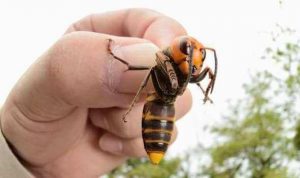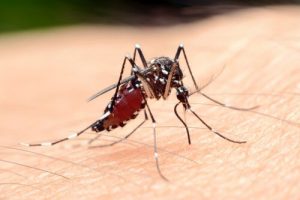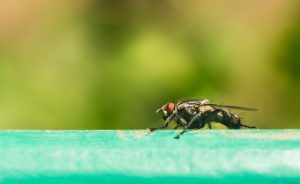The Deadliest Insects in The World

Insects are the species that have the greatest diversity on Earth. There are approximately one million species recorded, so they represent almost 90% of the known life forms on the planet.
You can find insects almost anywhere on the planet. They inhabit all kinds of ecosystems: forests, deserts, swamps, cities, and even in the ocean. In addition, not only are they diverse, but they’re also abundant because there is an estimation of 200 million insects per human being.
Despite their large numbers, they aren’t particularly lethal, although there are some species of killer insects, such as the ones below:
Warrior Ants
These ants are the most lethal in the world, true killer insects, and all thanks to their teamwork. They belong to several genera and subfamilies, but all share that they are large ants with extremely sharp mouths, which can be seen in the image above.
Many of these ants have a legionary behavior of being prone to attack other living beings. Plus, they’re nomadic, so their nests change location almost every day. Wherever they pass through, they devour any living creature that gets in their way, including quadrupeds like zebras and small horses. There are even cases of murders, in which these ants devoured disabled people.
These killer insects are found in many parts of Africa, and they are so abundant that their colonies can surpass 20 million ants.
Giant Asian Hornets (Vespa mandarinia)
This killer insect has an amazing length of 1.9 inches. It’s very similar in appearance to the most common wasps, but their huge size makes them very easy to identify. It’s found primarily in Nagano (Japan) and in several parts of China.

Source: www.express.co.uk
The venom of these insects is capable of dissolving tissue. Therefore, the stings from several of these hornets can be lethal, which has caused several human deaths. In the case of China, authorities report about 70 cases of death annually.
These hornets are warrior insects since they not only have stingers that can measure up to 0.39 inches, but they also have powerful jaws, a hard exoskeleton, and rear claws to hold their victims.
Anopheles
The well-known mosquitoes inhabit almost the entire planet, especially in temperate, tropical and subtropical regions. These mosquitoes aren’t killer insects, but the disease they transmit can cause death.

We are talking about malaria, a parasitic disease that in some cases can cause death by anemia or coma. The most complicated cases occur when they affect infants or pregnant women. Three million people die every year because Anopheles mosquitoes transmit this disease, according to WHO data.
Tsetse flies (Glossina)
This genus of flies, which lives in the central area of the African continent, are carriers of the deadly sleeping sickness, a parasite that can affect both large quadrupeds and humans.

In the last phase of the disease, the parasite invades the central nervous system and it’s from that moment when the most characteristic symptoms appear: drowsiness during the day and insomnia during the night.
This disease also causes changes in behavior, the patient concentrates less, is easily irritated and becomes indifferent. It also affects motor skills, so any minimal effort may be impossible to perform.
The fate of those who have sleeping sickness is death because during the final phase the patient goes into a coma until they die. This is one of the most devastating diseases in sub-Saharan Africa, with 80% of deaths among those infected. WHO estimates that about 300,000 people are infected every year.
The killer insects of the world
These killer insects can be lethal for many reasons. Some are lethal due to other living beings such as parasites or viruses, while others are dangerous due to their large numbers or lethal venom. The reason why there is such a great variety of specimens from this class of animals is due to their amazing ability to adaptive.
All cited sources were thoroughly reviewed by our team to ensure their quality, reliability, currency, and validity. The bibliography of this article was considered reliable and of academic or scientific accuracy.
Mound, L. A. (2000). Insect. New York : Dorling Kindersley.
This text is provided for informational purposes only and does not replace consultation with a professional. If in doubt, consult your specialist.